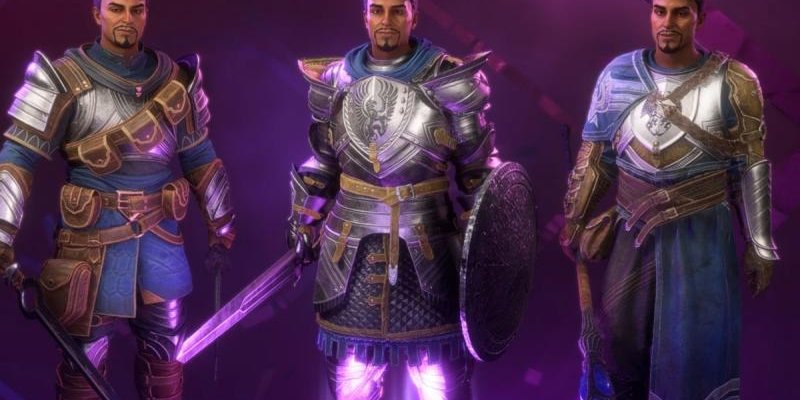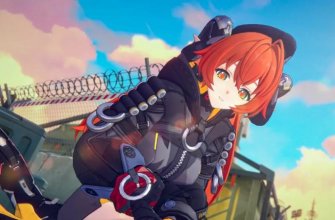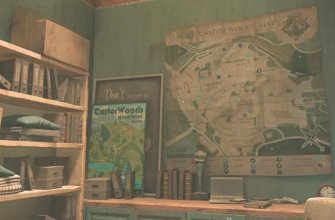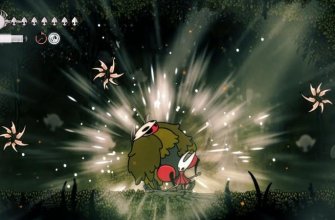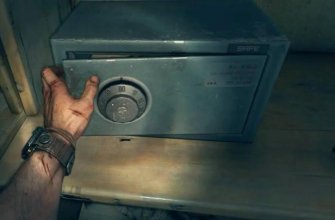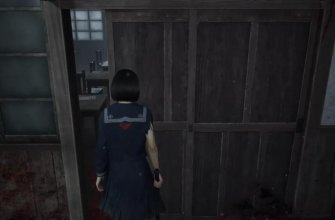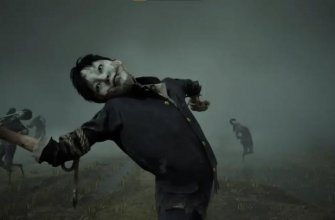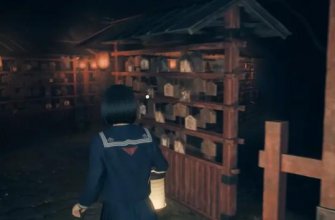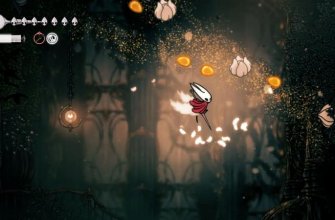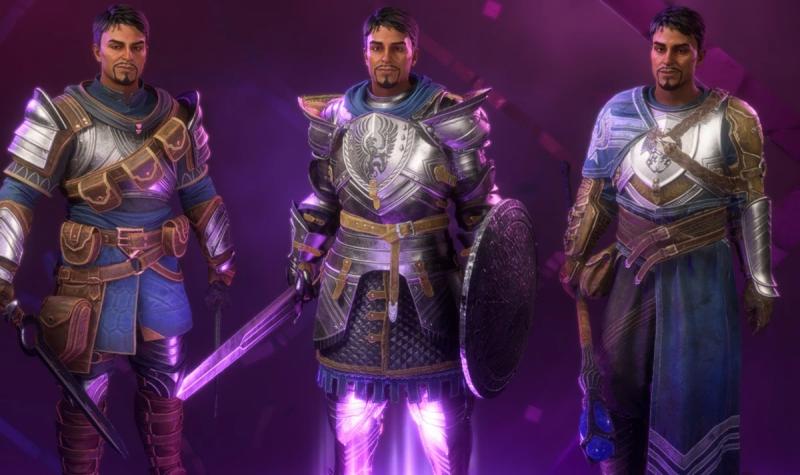
In Dragon Age The Veilguard, class is an important characteristic of the character, determining their playstyle. In this guide, we have considered all the archetypes in detail, indicating their strengths, weaknesses, and abilities, which should help you choose the best one. We've also given you a quick rundown of each class' skill tree so you'll have a rough idea of what's coming next.
All classes in Dragon Age The Veilguard
The developers decided to simplify the class system a bit, if we take the first part of the series for comparison, offering only three options to choose from: Warrior, Mage and Rogue. In addition, battles are no longer strictly turn-based. Although you can pause the game, giving orders to your companions and activating their skills, overall the battles have become more dynamic and easier to master.
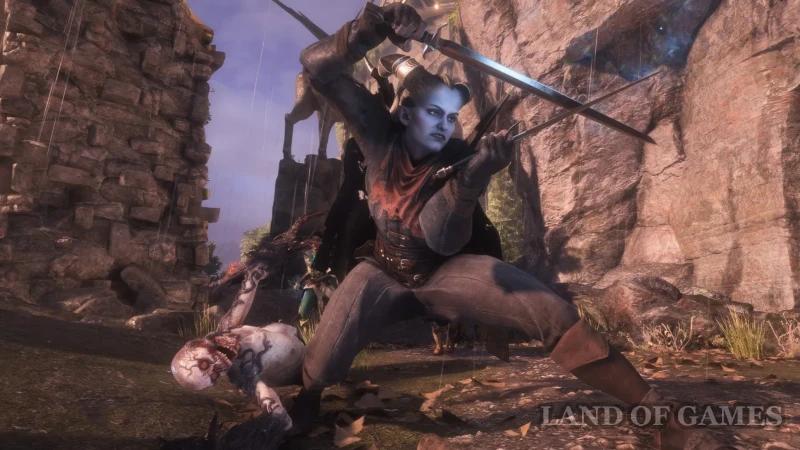
In addition, no matter which class you choose, they all have both ranged and melee attacks. All this somewhat simplifies the choice of archetype for your hero, since in the game, in fact, there is no frankly bad option that would be noticeably worse than other classes. As for leveling, it looks traditional for modern RPGs – you complete tasks and level up to get skill points and spend them on new skills in the skill tree.
Next, we will consider each class and its main skills separately in detail. We will add that you can create up to 3 hero profiles with their own set of saves. Therefore, nothing prevents you from trying out all the archetypes – their gameplay is more or less revealed in the first hour of the game – and make a choice based on your own feelings.
Warrior
The warrior can switch between a heavy two-handed weapon and a sword and shield at any time. The attacks are still relatively fast, but they can feel a bit slow compared to the rogue and mage classes, which is not surprising. Plus, the first half of the game can feel rather boring due to the overall slowness.
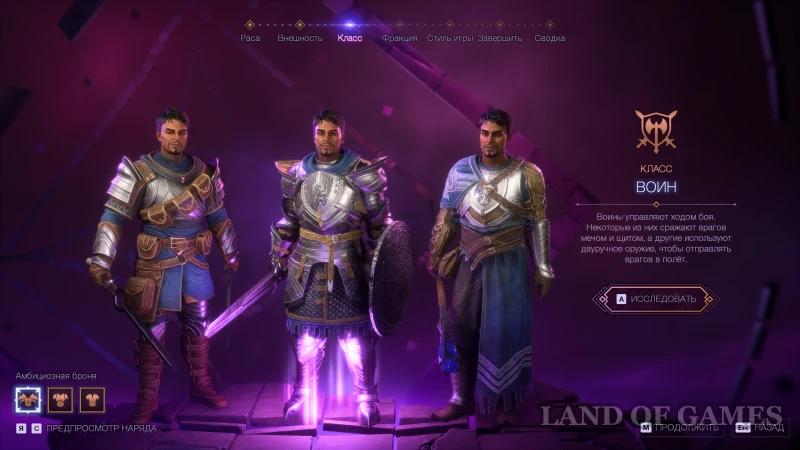
The Warrior can perform a running attack and throw a shield at enemies, which are his ranged attacks. When performing a heavy attack, he makes several circular swings with his weapon, damaging several enemies in front of him at once. Both of these combat mechanics can be improved through the skill tree.
The Warrior's resource is Fury. Once the Fury gauge is filled by performing consecutive combat strikes, Rook can immediately perform a ground fist attack to deal area damage.
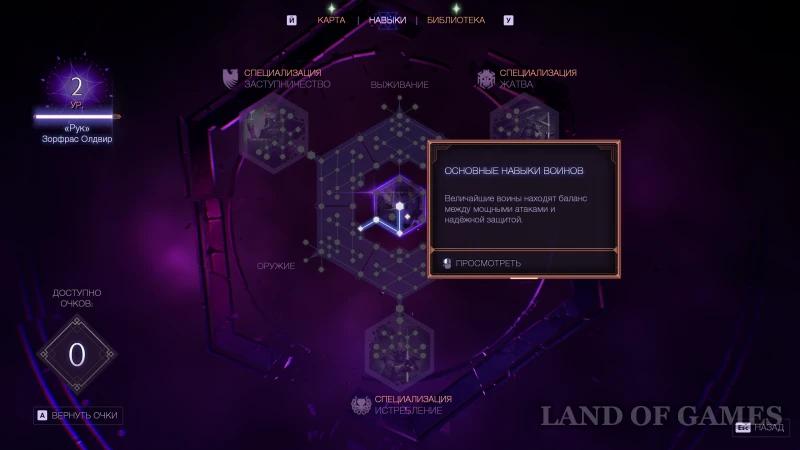
Note that you will be able to recruit two Warriors to your team in the future – Davrin from the Grey Wardens and Taash from the Lords of Fortune. However, you will not be able to get them right away, so if your hero is not a warrior, your squad will have to do without him for a long time. If we consider the branches of the skill tree, they can be characterized as follows:
- Abilities: This is a mix of crushing skills that allow you to throw back enemies to increase the distance between them and the hero, or provide the character with additional protection.
- Survival: These skills allow you to stun enemies, which will make them open for you to perform finishing blows that can potentially cause them massive damage.
- Weapons: These are charged heavy attacks and advanced weapon techniques with the ability to chain certain attacks together.
- Specialization Extermination: These abilities were created by the Fortune Lords faction and are centered around dealing critical hits. They include whirlwind attacks, area-of-effect stagger, and charged strikes with two-handed weapons.
- Harvest Specialization: Based on the tactics of the Sorrow's Watch, these skills focus on weakening enemies and shield throws. They primarily increase the damage of projectiles and necrotic skills.
- Intercession Specialization: Based on the tactics of the Grey Wardens, the skills present here include both defensive and offensive moves, most of which inflict Burning.
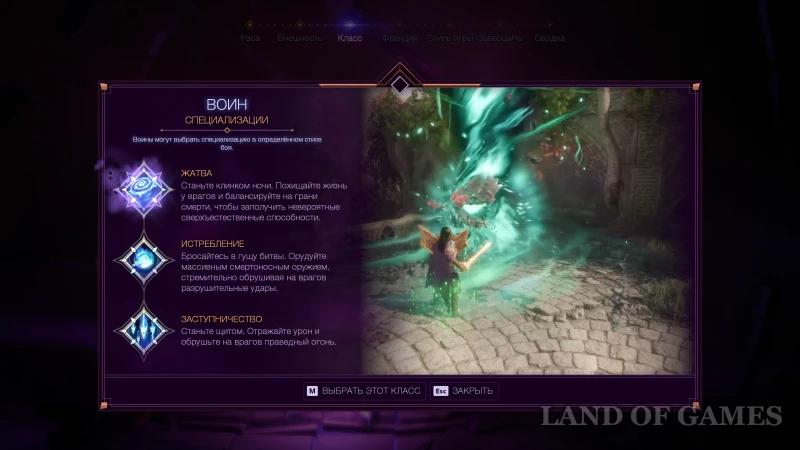
With all three specializations, you can easily turn your warrior into a main damage dealer (Havoc), dealing huge critical damage to enemies, a debuffer (Reaping), specializing in ranged attacks and weakening enemies, or a tank (Intercession), playing defensively and attacking with fire.
Rogue
This class offers the fastest and in some cases the most enjoyable combat experience. It can switch between short dual blades and a bow (for long-range attacks), and perform lightning-fast dodges and impressive kicks during battles. However, its health and defense leave much to be desired, which is why it is noticeably inferior to warriors in terms of survivability.
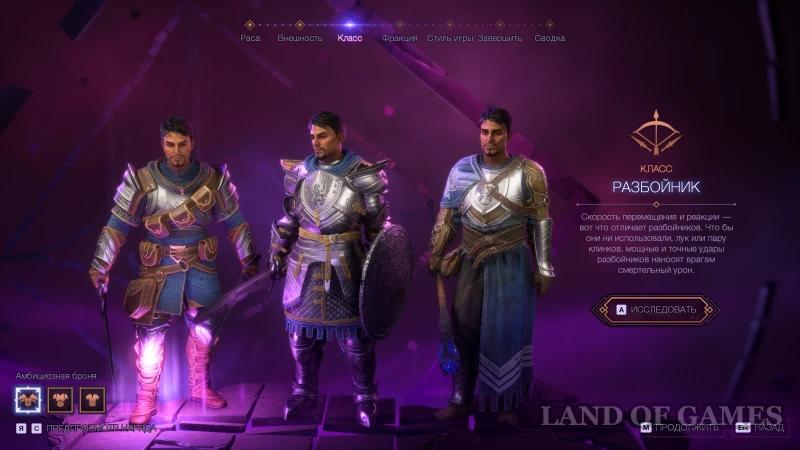
The Rogue builds up Momentum and can spend it on a powerful move where he leaps into the air and drops several bombs on his enemies. When performing a charged attack, he will either leap forward with an uppercut or leap into the air and swing his blades in a circle.
Your party includes Harding from Inquisition and Lucanis from the Antivan Ravens, so you can have a Rogue in your team right from the start. If we look at the branches of the skill tree, they can be described as follows:
- Burst: Includes powerful offensive skills such as Explosive Daggers and Blade Whirlwind.
- Control: Includes skills aimed at maximizing bow damage. Plus, arrows begin to inflict status effects – necrotic and stagger.
- Support: These are mainly defensive abilities, but there are also some interesting skills such as Steal (steals potions from the enemy) and Lightning Flask (allows you to throw electric flasks).
- The Curtain Recon specialization focuses on enhancing the bow, adding more attack types as well as bonus effects to charged shots and headshots.
- The Sabotage specialization focuses on enhancing explosions and projectiles, with skills that allow you to call in armed turrets, bombs, and other mechanical traps.
- Duel Specialization: These focus on maximizing Momentum, as well as enhancing melee attacks and parries. This includes skills like Thousand Cuts (fast successive strikes) and other necrotic damage-based effects.
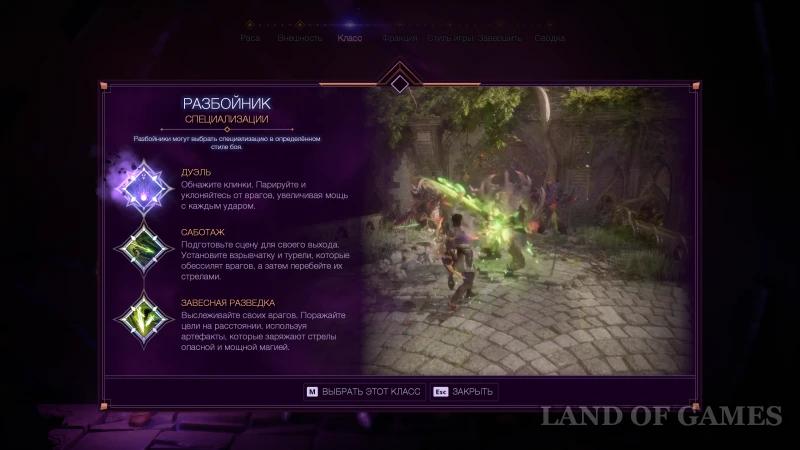
These specializations allow you to turn your rogue into a main damage dealer (Duel), capable of quickly dealing huge damage in close combat, a full-fledged archer (Veil Reconnaissance), aimed at dealing damage from a long distance, and a support/summoner (Sabotage), who mainly plays through gadgets.
Mage
This class can switch between a staff and an ice dagger, which calls a ball of cold energy that deals damage to enemies with each swing of the blade. The staff allows you to call energy waves and release a freezing beam with a large attack radius.
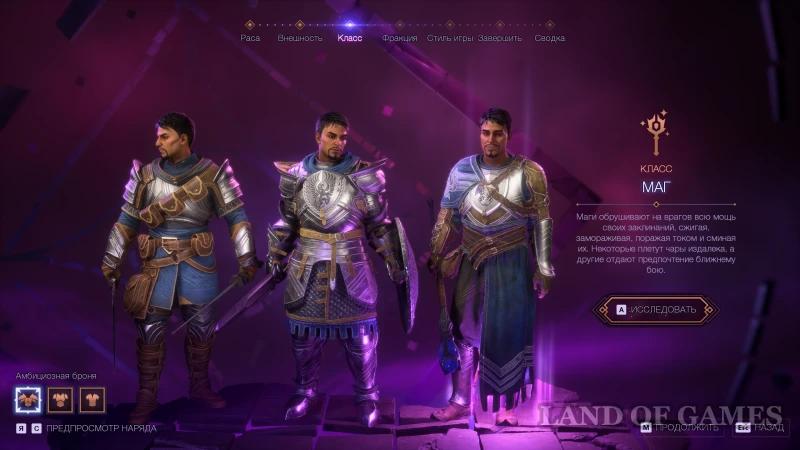
When a Mage dodges, they disappear for a while and then reappear in a ball of energy. The Mage doesn't seem to have a single powerful attack like other classes. Instead, they have Mana as their resource, and it's used to power all of their abilities (except for their standard melee attack). It regenerates over time, both in and out of combat. This can be considered their main weakness, as without Mana, the Sorcerer's combat potential is significantly reduced.
As you progress through the game, you'll be able to add three mages to your party: Bellara of the Veilwalkers, Nev of the Dragonshades, and Emmrik of the Sorrowwatch. This is quite a lot compared to other classes, and the reason for this is because they can specialize in different elements, so you can easily have two attacking mages on your active team, supported by a single tank warrior.
To better understand the playstyle available to mages, take a look at the main skill trees present in the tree:
- Support: Specializes in fire-based spells that deal damage over time. Includes skills like Meteor and Wall of Fire.
- Burst: Specializes in storm or lightning-based spells. These include skills like Chain Lightning (which targets multiple enemies) and Storm (which weaves a thunderstorm around you).
- Control: Specializes in ice spells that not only deal damage but also increase defense. Includes skills such as Ice Nova (summons a frost cyclone) and Ice Shot (pierces enemies with summoned ice shards).
- Spellsword Specialization: Focuses on enhancing the dagger and melee attacks, which deal massive electrical damage.
- Summoning Specialization: Focuses on enhancing ice attacks. Includes a number of skills to stun and slow enemies.
- Death Calling Specialization: Focused on dealing necrotic damage with a staff (ranged attacks) and draining life from enemies.
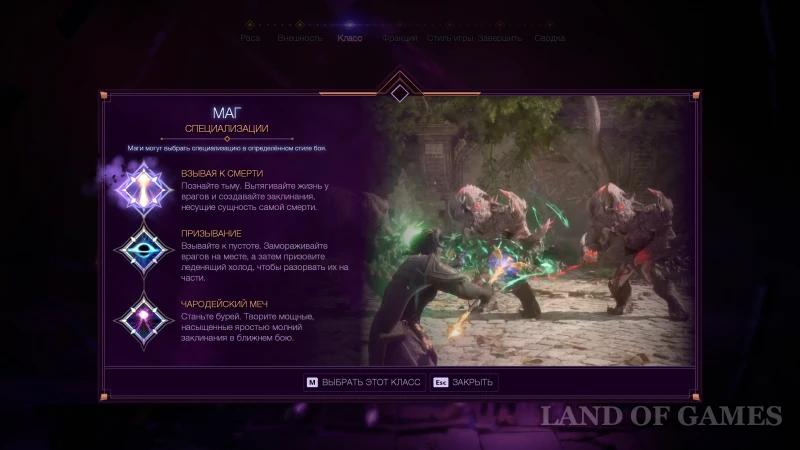
With these specializations, you can create a warrior-mage (Arcane sword), attacking enemies up close, a necromancer, dealing damage from afar and stealing health, or a debuffer wizard, applying debuffs and hitting with ice.
The best class in Dragon Age The Veilguard
We will immediately note that there are no best classes in the game as such, since due to the presence of three specializations for each archetype and the ability to redistribute skill points without any penalties, you can easily turn your character into the fighter you want. Therefore, much here depends on your personal preferences.
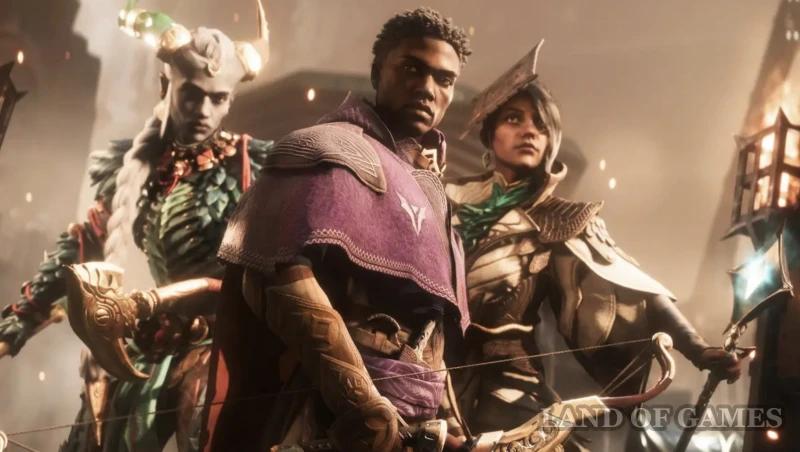
If you want to get a balanced hero who can not only withstand enemy attacks, but also deal good damage, then take the Warrior. He is also the most optimal choice for beginners, as his gameplay is the easiest to master. Those who prefer to quickly move around the battlefield, dodging enemy attacks and dealing critical hits to their backs, should pay attention to the Rogue. He will also suit fans of long-range combat due to his bow.
If you like to control the battlefield and send mass spells to enemies, then take the Mage. In addition, he can be turned into an excellent melee fighter thanks to the Arcane Sword. In general, mages in the Dragon Age series have always been considered the most interesting and well-developed class, and Veilguard is no exception. That is why there are the most wizard companions in the game. The game itself encourages you to keep two spellcasters in your party.
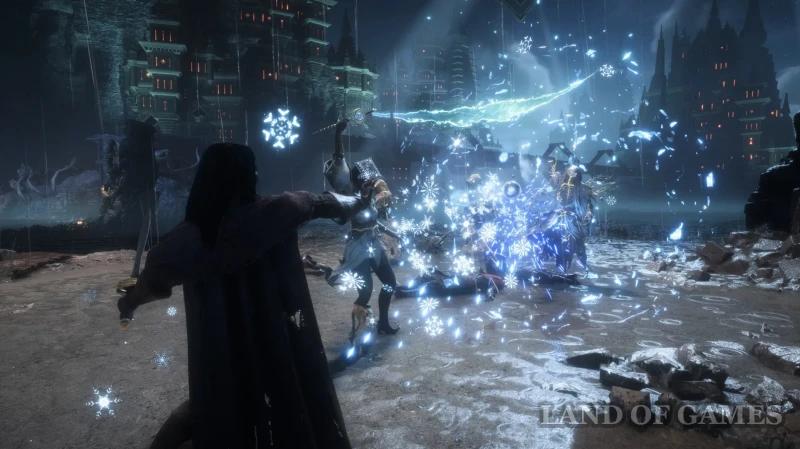
So our advice will look like this: if you are a beginner player, then take the Warrior, and for veterans of RPGs and the Dragon Age series in particular, we, as always, advise taking the Mage. In subsequent playthroughs, you can try the Rogue, who also turned out to be quite good.




